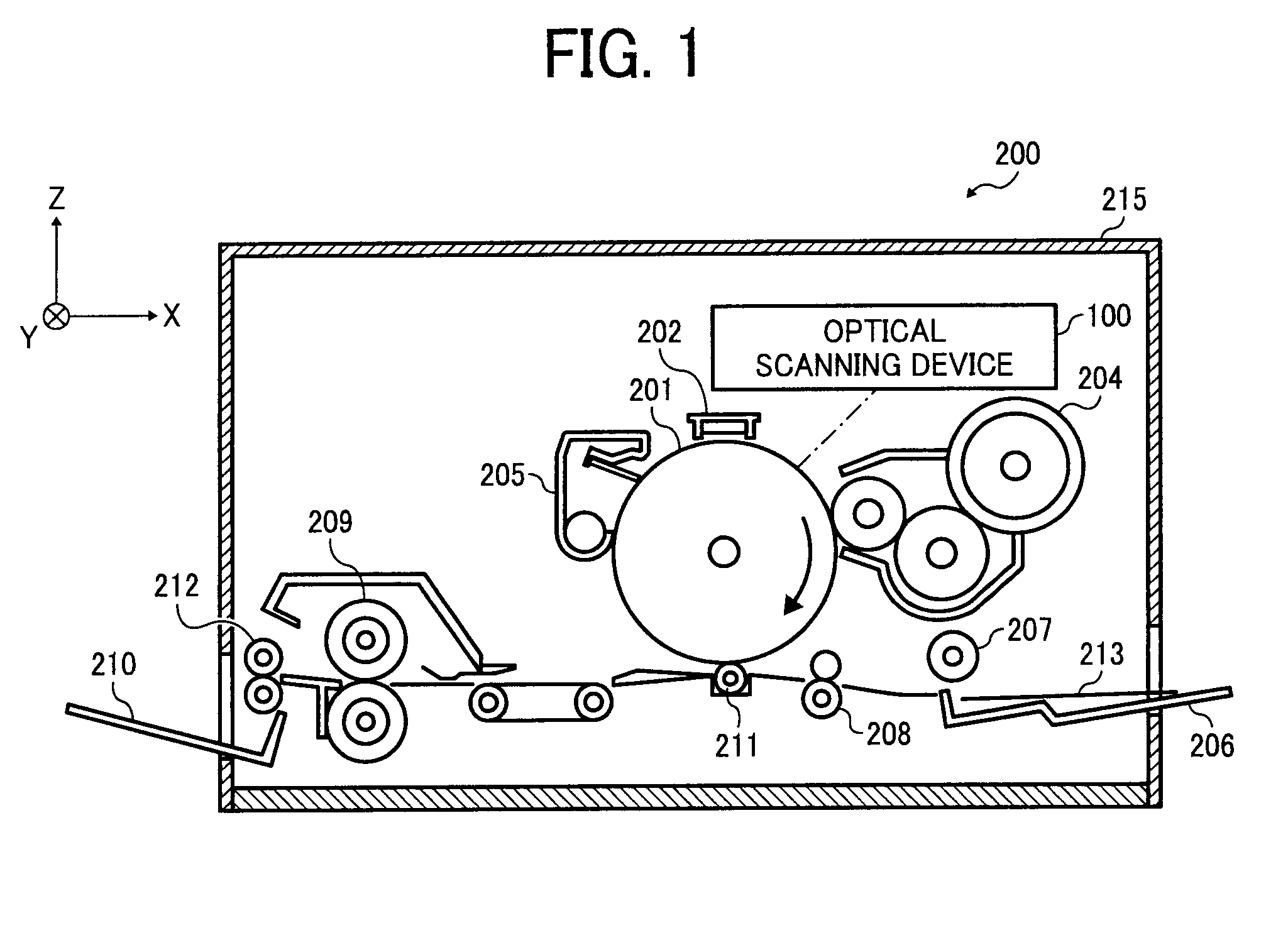Optical scanning device and image forming apparatus
a scanning device and image forming technology, applied in the field of optical scanning devices and image forming apparatuses, can solve the problems of deteriorating image quality, aforementioned problems becoming more serious, and thus deteriorating image quality
- Summary
- Abstract
- Description
- Claims
- Application Information
AI Technical Summary
Benefits of technology
Problems solved by technology
Method used
Image
Examples
first embodiment
[0073]The light source 10 is a surface emitting semiconductor laser array that emission points, for example, VCSELs are two-dimensionally arranged. As shown in FIG. 3, on the light emitting surface (−X side surface), 40 VCSELs are arranged in a four-row, ten-column matrix whose row direction is parallel to the line L1 making an angle θ1 with the y axis and column direction is parallel to the z axis. Each VCSEL has a near-field pattern diameter of 4 micrometers. A light beam with a wavelength of 780 nanometers is outputted from VCSEL at 7±1 degrees of main scanning direction and sub-scanning direction divergence angles. In the first embodiment, the distance Dz between rows is 25.0 micrometers while the distance Dy between columns 30.0 micrometers. The distance dz between adjacent VCSELs in the Z-axis direction (sub-scanning direction) is 2.5 micrometers (4800 dots per inch (dpi)).
[0074]The coupling lens 11 has a focal length of 47.7 millimeters and couples the light beams from the li...
second embodiment
[0136]In the two-dimensional array of VCSELs, the distance between two adjacent light emitting units needs to be large in view of prevention of heat generation and wirings. The distance dz between two adjacent light emitting units in the S direction is 1=dz<5 μm. The distance dm between light emitting units in the M direction becomes larger than dz. for example, the writing density is 4800 dpi, Dy=30 μm, Dz=25 μm, and dz=2.5 μM. The distance between two light emitting units at the opposite ends in the M direction is calculated as Dy×9=270 μm, while the distance between two light emitting units at the opposite ends in the S direction dz×39=97.5 μm.
[0137]According to another example, in the two-dimensional array of VCSELs, the distance dz between two adjacent light emitting units in the S direction is determined to be 1=dz=4 μm. The distance dm between light emitting units in the M direction is larger than dz. According to the second embodiment, for example, the writing density is 48...
PUM
 Login to View More
Login to View More Abstract
Description
Claims
Application Information
 Login to View More
Login to View More - R&D
- Intellectual Property
- Life Sciences
- Materials
- Tech Scout
- Unparalleled Data Quality
- Higher Quality Content
- 60% Fewer Hallucinations
Browse by: Latest US Patents, China's latest patents, Technical Efficacy Thesaurus, Application Domain, Technology Topic, Popular Technical Reports.
© 2025 PatSnap. All rights reserved.Legal|Privacy policy|Modern Slavery Act Transparency Statement|Sitemap|About US| Contact US: help@patsnap.com



